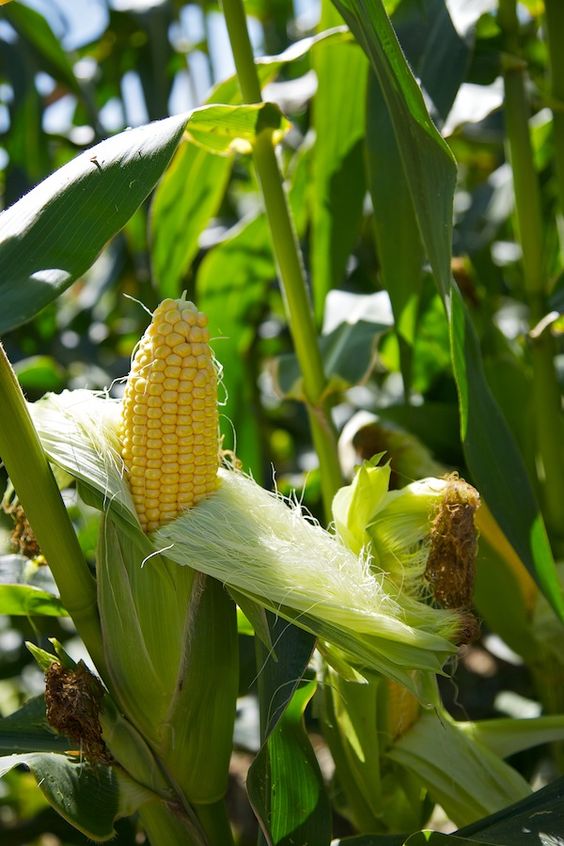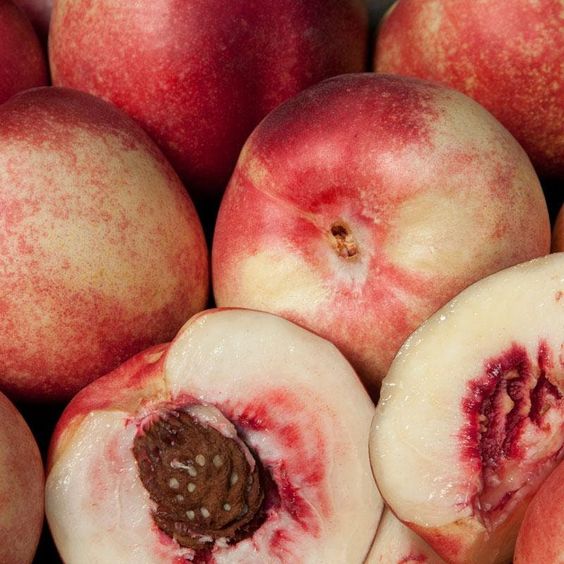Smart Agriculture in Corn Growth Monitoring: Harnessing Technology for Enhanced Yield
Corn Growth Monitoring,Agriculture has undergone a significant transformation with the advent of smart technologies. Smart Agriculture, also known as precision farming, integrates advanced technologies such as the Internet of Things (IoT), big data, artificial intelligence (AI), and satellite imaging to enhance crop production, improve resource efficiency, and reduce environmental impact. In this article, we delve into the application of Smart Agriculture in corn growth monitoring, exploring how these technologies can revolutionize corn farming by providing real-time data, optimizing farming practices, and ultimately increasing yields.
Contents
- 1 The Evolution of Smart Agriculture
- 2 Smart Agriculture in Corn Growth Monitoring
- 3 Benefits of Smart Agriculture in Corn Growth Monitoring
- 4 Objectives of Smart Agriculture in Corn Growth Monitoring
- 5 Explanation of Key Technologies
- 6 Usefulness of Smart Agriculture in Corn Growth Monitoring
- 7 Advantages of Smart Agriculture
- 8
- 9
- 10 Challenges and Future Directions
The Evolution of Smart Agriculture
Smart Agriculture represents a paradigm shift from traditional farming methods to data-driven, technology-enabled practices. This evolution has been driven by the need to feed a growing global population, address climate change challenges, and make farming more sustainable. Key technologies driving Smart Agriculture include:
- Internet of Things (IoT): IoT devices, such as sensors and drones, collect data on soil moisture, temperature, humidity, and crop health. This data is transmitted in real-time to cloud-based platforms for analysis.
- Big Data Analytics: Large volumes of data collected from various sources are analyzed to identify patterns, predict outcomes, and make informed decisions. Big data analytics helps farmers understand crop behavior, predict pest outbreaks, and optimize irrigation and fertilization schedules.
- Artificial Intelligence (AI): AI algorithms process data to provide actionable insights. Machine learning models can predict crop yields, detect diseases, and recommend optimal farming practices.
- Satellite Imaging and Remote Sensing: Satellite images provide a bird’s-eye view of crop fields, allowing farmers to monitor crop health, assess damage from pests or weather, and manage large areas more efficiently.
Smart Agriculture in Corn Growth Monitoring
Corn Growth Monitoring, a staple crop globally, benefits significantly from Smart Agriculture. Corn growth monitoring using smart technologies involves several steps:
- Soil Health Monitoring: Sensors measure soil parameters such as pH, nutrient levels, and moisture content. This information helps farmers apply the right amount of fertilizers and water, preventing overuse and reducing costs.
- Weather Forecasting: Accurate weather predictions enable farmers to plan planting and harvesting activities. Weather stations and satellite data provide real-time updates on temperature, rainfall, and wind speed, helping farmers make timely decisions.
- Crop Health Monitoring: Drones equipped with multispectral cameras capture images of cornfields, identifying areas affected by pests, diseases, or nutrient deficiencies. AI algorithms analyze these images to provide actionable insights.
- Irrigation Management: Smart irrigation systems use data from soil moisture sensors to optimize water usage. These systems ensure that corn plants receive the right amount of water at the right time, promoting healthy growth and conserving water resources.
- Yield Prediction: Machine learning models analyze historical data and current growth conditions to predict corn yields. This information helps farmers plan for storage, marketing, and resource allocation.
Benefits of Smart Agriculture in Corn Growth Monitoring
- Increased Yields: By optimizing inputs such as water, fertilizers, and pesticides, farmers can achieve higher corn yields. Precision farming techniques ensure that resources are used efficiently, resulting in healthier plants and better harvests.
- Resource Efficiency: Smart Agriculture minimizes the wastage of resources. For instance, targeted irrigation and fertilization reduce the use of water and chemicals, leading to cost savings and environmental benefits.
- Real-Time Monitoring: Continuous monitoring of crop health and soil conditions allows farmers to address issues promptly. Early detection of pests and diseases prevents significant crop losses.
- Sustainability: By reducing the overuse of water and chemicals, Smart Agriculture promotes sustainable farming practices. This approach helps protect natural resources and reduces the carbon footprint of farming operations.
- Risk Management: Accurate weather forecasting and yield predictions enable farmers to manage risks associated with climate variability and market fluctuations. This information supports better planning and decision-making.
Objectives of Smart Agriculture in Corn Growth Monitoring
- Optimize Resource Usage: Ensure that water, fertilizers, and pesticides are used efficiently to promote healthy corn growth while minimizing environmental impact.
- Enhance Crop Yields: Leverage data-driven insights to improve corn yields, contributing to food security and farmer profitability.
- Improve Crop Health: Monitor crop health continuously to detect and address issues such as pests, diseases, and nutrient deficiencies promptly.
- Support Sustainable Practices: Encourage sustainable farming practices that conserve natural resources and reduce environmental impact.
- Empower Farmers: Provide farmers with actionable insights and tools to make informed decisions, enhance productivity, and improve livelihoods.
Explanation of Key Technologies
- IoT Sensors: IoT sensors are critical in Smart Agriculture for real-time data collection. These sensors measure various parameters, including soil moisture, temperature, and nutrient levels, providing a comprehensive view of the growing conditions.
- Drones and Imaging: Drones equipped with multispectral cameras capture high-resolution images of cornfields. These images are analyzed using AI to identify problem areas and assess crop health.
- Big Data Analytics: The vast amounts of data collected from sensors, drones, and satellites are analyzed to generate insights. Big data analytics helps in understanding patterns, predicting outcomes, and making data-driven decisions.
- AI and Machine Learning: AI algorithms process data to provide predictive insights. Machine learning models can predict yields, detect diseases, and recommend optimal farming practices based on historical and real-time data.
- Satellite Imaging: Satellite images offer a macroscopic view of large agricultural areas. These images help in monitoring crop health, assessing damage, and managing resources effectively.
Usefulness of Smart Agriculture in Corn Growth Monitoring
Corn Growth Monitoring Smart Agriculture is immensely useful for corn growth monitoring due to the following reasons:
- Precision: It enables precise application of water, fertilizers, and pesticides, ensuring that each corn plant receives the right amount of resources.
- Early Detection: Early detection of pests, diseases, and nutrient deficiencies allows for timely intervention, preventing significant crop losses.
- Cost Savings: Efficient use of resources leads to cost savings for farmers. Smart irrigation, for example, reduces water usage, lowering utility bills.
- Better Planning: Accurate yield predictions and weather forecasts support better planning of planting, harvesting, and marketing activities.
- Environmental Protection: Reduced use of chemicals and water promotes environmental sustainability, protecting soil and water resources.

Advantages of Smart Agriculture
- Increased Productivity: Precision farming techniques lead to higher productivity and better-quality crops.
- Reduced Labor Costs: Automation and real-time monitoring reduce the need for manual labor, lowering labor costs.
- Data-Driven Decisions: Farmers can make informed decisions based on data, leading to better outcomes.
- Scalability: Smart Agriculture technologies can be scaled to large farming operations, making it suitable for both small and large farms.
- Market Competitiveness: Improved yields and reduced costs enhance the market competitiveness of farmers.
Challenges and Future Directions
Corn Growth Monitoring,While Smart Agriculture holds great promise, several challenges need to be addressed:
- Cost of Technology: The initial investment in smart technologies can be high, posing a barrier for small-scale farmers.
- Data Management: Handling large volumes of data requires robust data management systems and expertise.
- Connectivity: Reliable internet connectivity is essential for real-time data transmission, which can be a challenge in remote areas.
- Training and Awareness: Farmers need training to effectively use smart technologies and interpret data insights.
Future directions for Smart Agriculture in corn growth monitoring include:
- Integration of Technologies: Combining various technologies such as IoT, AI, and blockchain for enhanced traceability and transparency in the food supply chain.
- Affordable Solutions: Developing cost-effective smart farming solutions to make technology accessible to small-scale farmers.
- Improved Connectivity: Expanding internet connectivity in rural areas to support real-time data transmission and monitoring.
- Sustainable Practices: Furthering research and development of sustainable farming practices to reduce environmental impact and promote regenerative agriculture.
Corn Growth Monitoring Smart Agriculture is revolutionizing corn growth monitoring by integrating advanced technologies to enhance productivity, optimize resource usage, and promote sustainability. The benefits of precision farming are evident in increased yields, cost savings, and improved crop health. While challenges remain, the future of Smart Agriculture looks promising with continued technological advancements and efforts to make these innovations accessible to all farmers. Embracing Smart Agriculture can lead to a more sustainable and productive agricultural sector, ensuring food security for future generations.




